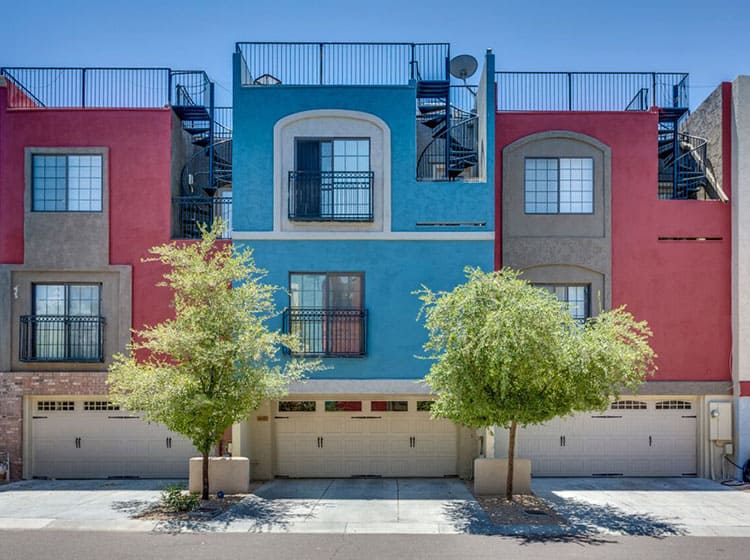The Impact Of Weather Condition On Your Commercial External Paint Project Is Extensive-- Check Out Exactly How It Can Either Improve Or Weaken Your Results
The Impact Of Weather Condition On Your Commercial External Paint Project Is Extensive-- Check Out Exactly How It Can Either Improve Or Weaken Your Results
Blog Article
Composed By-Duke Kidd
When you're planning an industrial outside paint job, do not undervalue the influence of weather on your outcomes. You require to consider variables like temperature level, moisture, and rainfall, as they can make or break your paint job. As an example, did you recognize that ideal conditions require certain temperature level varieties and humidity levels? Falling short to keep track of these facets can result in uneven coatings and even damage to fresh paint. Understanding these elements is crucial to accomplishing a long-lasting, expert result. So, what specific weather conditions should you watch out for?
Temperature level Considerations
When it involves industrial outside painting, temperature plays an essential function in the outcome of your project. If https://www.kcur.org/arts-life/2022-12-31/a-guide-to-the-home-and-studio-of-thomas-hart-benton-kansas-citys-most-prolific-painter in severe warm, the paint can dry out as well quickly, resulting in concerns like inadequate attachment and irregular coatings. You intend to aim for temperatures between 50 ° F and 85 ° F for the best results. Below 50 ° F, paint may not treat effectively, while above 85 ° F, you run the risk of blistering and breaking.
Timing your task with the appropriate temperature levels is vital. Start https://painter-near-me20865.thelateblog.com/33785174/secret-insights-from-paint-contractors-what-you-have-to-comprehend in the early morning or later in the mid-day when it's cooler, particularly during hot months.
Likewise, take into consideration the surface temperature; it can be significantly higher than the air temperature, especially on bright days. Use a surface thermostat to inspect this prior to you begin.
If temperature levels are unforeseeable, watch on the weather report. Unexpected temperature level declines or warm front can hinder your plans. You don't want to begin painting only to have the conditions alter mid-project.
Humidity Degrees
Moisture degrees significantly impact the success of your commercial outside painting project. When the moisture is too expensive, it can impede paint drying out and healing, causing a variety of problems like bad attachment and end up top quality.
If you're planning a work throughout damp conditions, you may find that the paint takes longer to dry, which can expand your task timeline and increase expenses.
Alternatively, reduced humidity can also posture challenges. Paint may dry out as well swiftly, avoiding correct application and resulting in an irregular surface.
You'll want to keep track of the humidity degrees closely to guarantee you're functioning within the optimal array, generally in between 40% and 70%.
To get the best results, take into consideration using a hygrometer to measure moisture prior to beginning your project.
If you find the levels are outside the optimal array, you might require to adjust your timetable or pick paints made for variable problems.
Always seek advice from the manufacturer's guidelines for particular referrals on moisture resistance.
Precipitation Effect
Rain or snow can substantially disrupt your business outside painting plans. When rainfall occurs, it can remove fresh used paint or develop an unequal surface. Ideally, you want to select days with completely dry weather to make certain the paint sticks appropriately and treatments effectively. If you're caught in a shower, it's ideal to halt the task and await conditions to improve.
Furthermore, snow can be much more destructive. Not just does it create a damp surface area, yet it can likewise reduce temperatures, making it hard for paint to completely dry. This can lead to concerns like peeling or blistering down the line.
It's critical to examine the weather forecast before beginning your job. If rainfall or snow is forecasted, think about rescheduling.
Constantly bear in mind to enable sufficient drying time in between layers, especially if the weather remains unforeseeable.
Verdict
Finally, watching on the climate is necessary for an effective business external painting project. By checking painting companies , humidity, and rainfall, you can make certain the best conditions for application and healing. Keep in mind to intend your work around positive weather and always comply with maker standards. With the ideal method, you'll achieve a durable, lovely finish that can withstand the elements. Don't allow the weather condition capture you off-guard-- remain educated and repaint clever!
